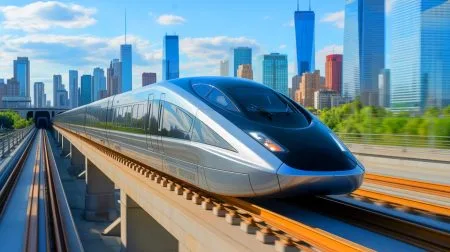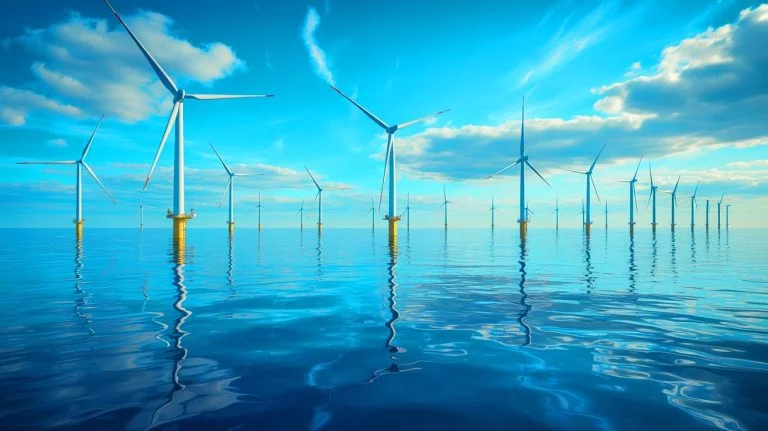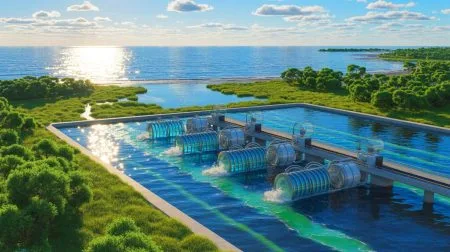| IN A NUTSHELL |
|
In a significant stride towards renewable energy, Germany has embarked on constructing one of the world’s largest offshore wind farms, the Nordseecluster, located in the North Sea. This ambitious project is led by RWE Offshore Wind, a prominent German energy company specializing in offshore wind farm development. The Nordseecluster promises to generate 1.6 gigawatts of clean energy, sufficient to power approximately 1.6 million households. Situated about 31 miles north of Juist Island, this project symbolizes a pivotal shift towards sustainable energy solutions. As the first turbine foundation has been installed, stakeholders eagerly anticipate the project’s full impact on Germany’s green energy landscape.
North Sea Goes Green
The installation of the first turbine foundation marks a monumental step for the Nordseecluster offshore wind project. The monopiles, each weighing approximately 1,653 US tons and measuring about 279 feet in length, were transported from Eemshaven, Netherlands. These massive structures were carried by Van Oord’s Boreas, a state-of-the-art vessel designed for large-scale renewable projects. This vessel can transport up to four monopiles per trip, underscoring the project’s grand scale.
The Nordseecluster is unique in its design, opting for an extended single-monopile approach. This innovation eliminates the need for separate transition pieces, streamlining the installation process and reducing steel usage. This design not only enhances efficiency but also aligns with sustainability goals, signaling a step forward in eco-friendly engineering. By reducing material requirements, the project aims to minimize environmental impact while maximizing energy output.
Nordseecluster B to Follow
The Nordseecluster project unfolds in two phases, beginning with Nordseecluster A, set to commence operations in early 2027. This initial phase will feature 44 wind turbines, delivering a capacity of 660 megawatts. The installation of these turbines is scheduled for 2026, marking a significant milestone following years of meticulous planning and preparation by RWE Offshore Wind.
Nordseecluster B, the subsequent phase, will introduce an additional 900 megawatts through 60 turbines, with completion anticipated by early 2029. This phase will bring the project’s total capacity to 1.6 gigawatts. RWE Offshore Wind is spearheading this endeavor in collaboration with Norges Bank Investment Management, which holds a 49 percent stake. RWE retains the majority share and assumes responsibility for the project’s lifecycle.
Three-tonne fuel savings per day: This revolutionary winged cargo ship sets a new maritime standard
Partnerships and Experience
RWE Offshore Wind’s collaboration with Norges Bank Investment Management illustrates the strategic partnerships essential for such a venture. With RWE holding a 51 percent stake, this joint venture underscores the company’s commitment to leading the offshore wind sector. Sven Utermöhlen, CEO of RWE Offshore Wind, expresses gratitude to supply chain partners and colleagues, emphasizing the collaborative effort behind this success.
RWE’s expertise extends beyond the Nordseecluster, with over two decades in the renewable energy sector. The company manages several high-profile projects, including the 1.4 gigawatt Sofia wind farm in the UK and the 1.1 gigawatt Thor project in Denmark. These projects highlight RWE’s role as a global leader in offshore wind energy, leveraging experience and innovation to drive sustainable solutions.
Implications for Renewable Energy
The Nordseecluster project is a testament to Germany’s commitment to renewable energy and its potential to transform the energy landscape. By harnessing offshore wind power, Germany aims to meet increasing energy demands while reducing carbon emissions. This project not only contributes to national energy goals but also sets a precedent for future renewable initiatives worldwide.
As the world grapples with climate change challenges, projects like the Nordseecluster offer hope and inspiration. They demonstrate how technological advancements and strategic partnerships can pave the way for a sustainable future. The success of this project could influence energy policies and encourage other nations to invest in similar renewable energy solutions.
The journey of the Nordseecluster offshore wind project is an ambitious leap towards sustainable energy. As the project progresses, it raises important questions about the future of renewable energy. How will such projects influence global energy policies, and what role will they play in shaping a cleaner, sustainable future for generations to come?
Did you like it? 4.5/5 (21)







Wow, 1.6 million homes! That’s impressive! 👏
Why is there such a backlash if it’s for renewable energy?
3.2 billion dollars? 😲 That’s a lot of money!
Will this project actually reduce energy costs in the long run?
I’m all for green energy, but at what cost to the taxpayer?
How will this impact the local wildlife in the North Sea?
Finally, Germany is taking a big step towards renewable energy. Bravo!
Are there any plans to mitigate the environmental impact?
Does anyone know how much the electricity will cost per household?
The future is wind-powered! 🌀🌍